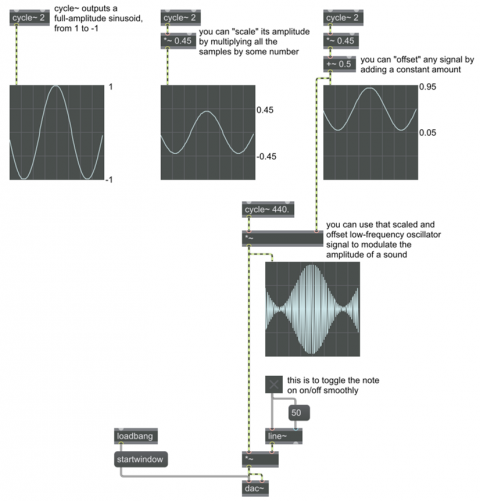Scale and offset

There’s a simple way to convert one range of values into a corresponding set of values in a different range. The mathematical operations necessary to do that are “scaling” (one multiplication) and “offsetting” (one addition). For example, if you have a values in a range from -1 to 1, and you want to convert those to a corresponding set of values in the range 0.05 to 0.95, you can multiply (scale) the values all by 0.45 so they now range from -0.45 to 0.45, and then add to (offset) all of them 0.5 thus pushing the range up to 0.05 to 0.95.
These two operations—scaling and offsetting, one multiplication and one addition—are super-useful for moving numbers to a different range, something one needs to do often in programming.
In this example, we take the output of a sinusoidal LFO (low-frequency oscillator), which in MSP is in the range -1 to 1 from a cycle~ object, and move that into the range 0.05 to 0.95, which is more useful for amplitude modulation to create a deep, slow tremolo effect. Tremolo is a slow repetitive modulation of the amplitude of a sound signal, thus varying its loudness.